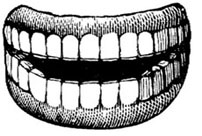
Last Judgment (Lite)
TOPSY-TURVY ESCHATOLOGY
One critic has trenchantly observed that today’s dissident theologians are really closet ultramontanes: They are devoted to the teaching of the next Holy Father, whom they expect will “reform” Church teaching to their liking. The problem is that such a Pope never materializes.
Such expectations were dominant in the mid-1970s — in the latter years of Pope Paul VI’s pontificate. The same voices (from many of the same people) are again being heard, claiming that once Wojtyla is gone, a new Pope will get us back on the road to utopia.
Since the Holy Spirit apparently did not co-operate during the 1978 conclaves, some dissidents are now hedging their bets. John Hogue, however, projects his bets onto the end of the world! In his book The Last Pope: The Decline and Fall of the Church of Rome, Hogue uses the “Prophecies of St. Malachy” as a backdrop to advance his politically-correct views. The prophecies are supposedly the visions of the Irishman, St. Malachy, predicting each of the Popes who would reign between his time and the end of the world. According to the prophecies, two are left: John Paul II’s successor, and the Pope who reigns at the end of the world.
Malachy’s “prophecies” usually consist of a brief phrase about each Pope, often highly enigmatic and patient of varying interpretations (the “correct” one usually the result of Monday morning quarterbacking). Catholics now await the last two popes: “De Gloria Olivae” (the Glory of the Olive), followed by “Petrus Romanus” (Peter the Roman).
You May Also Enjoy
The authors of "The Coming Global Superstorm" seem strangely excited about an imminent climatic cataclysm.
Evil spirits, often in a very subtle manner, have been far more clever and more destructive of sound spiritual thinking than generally supposed.
Parents experience great grief when they do not have the moral assurance of the salvation of their unbaptized children.

